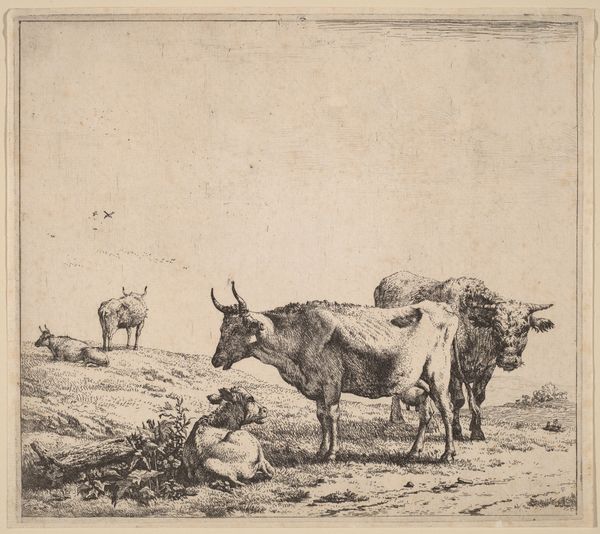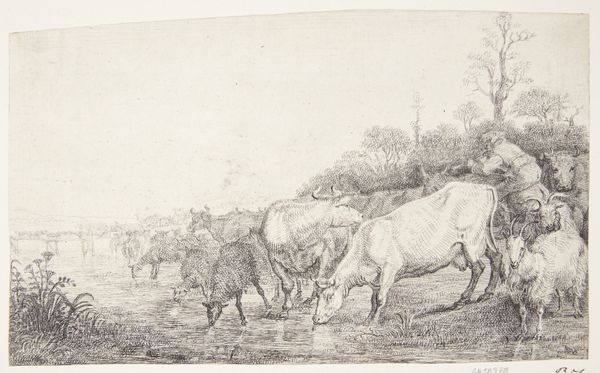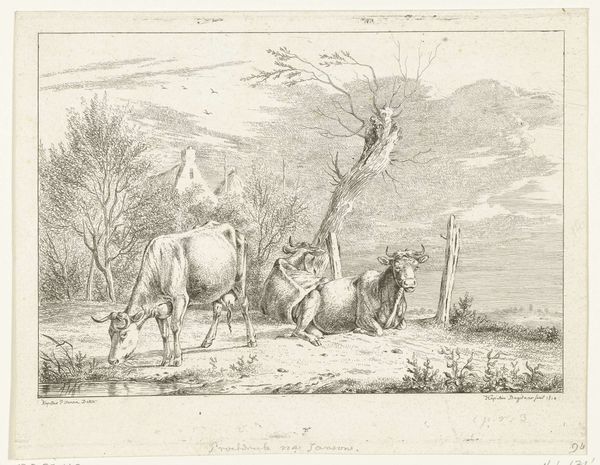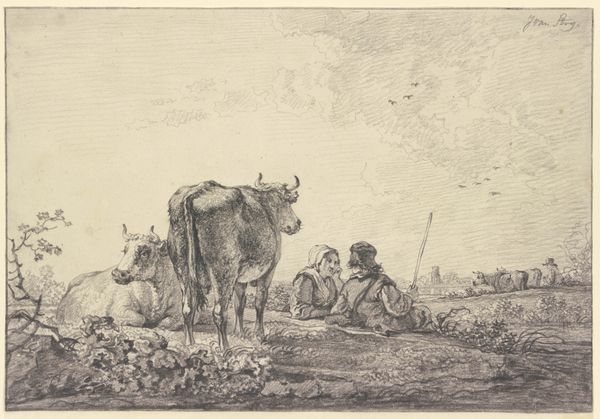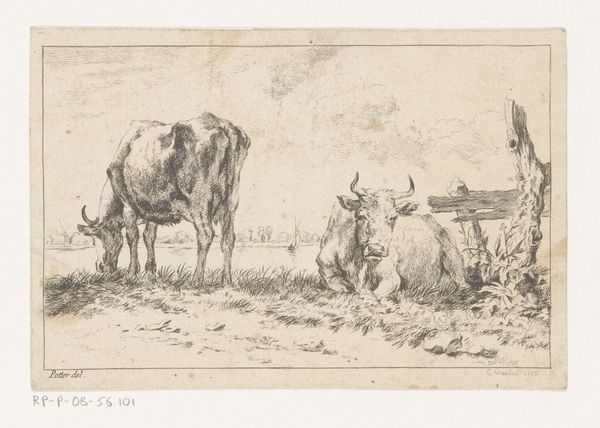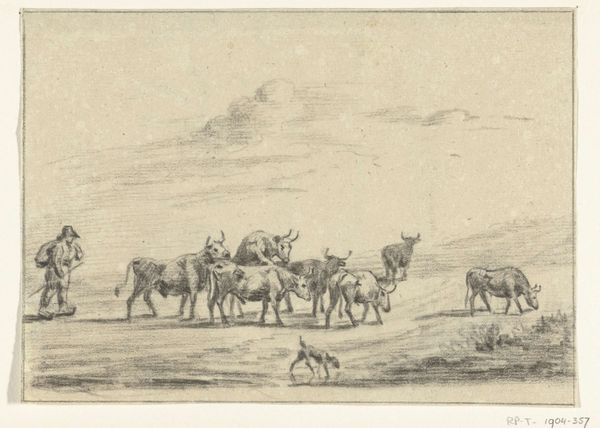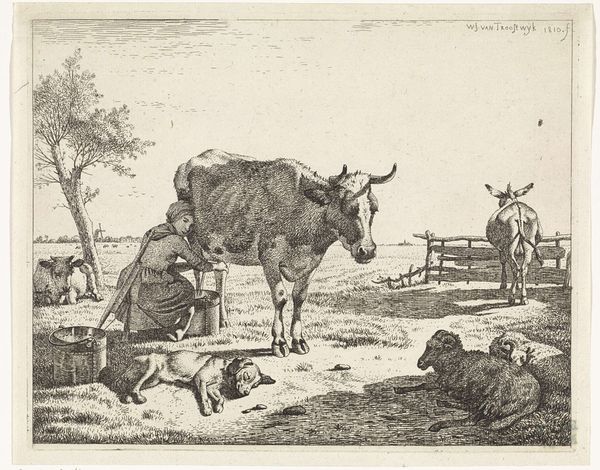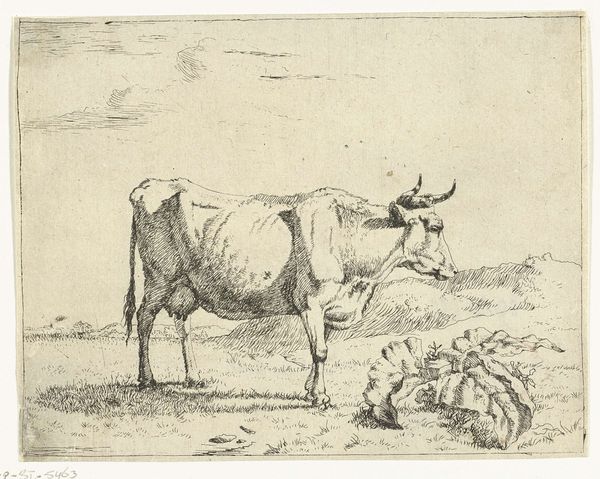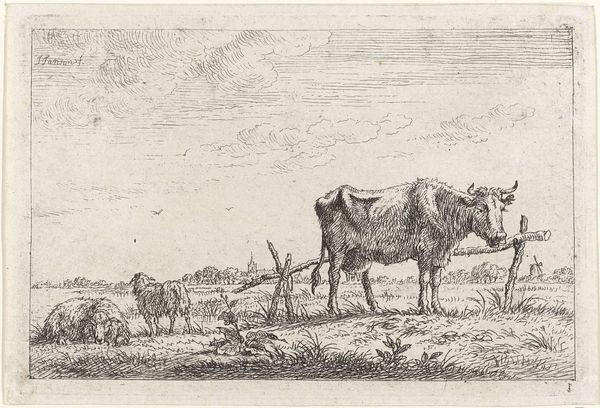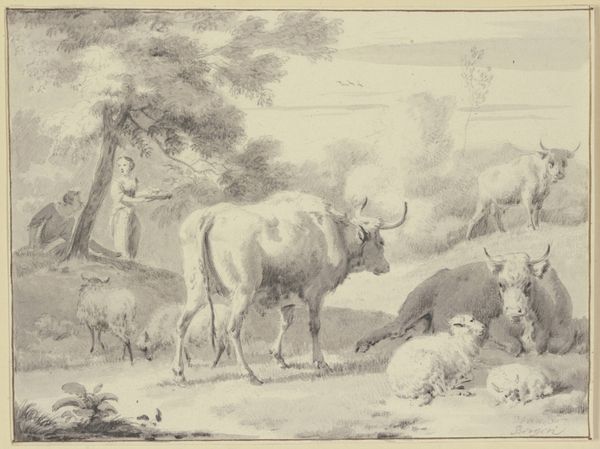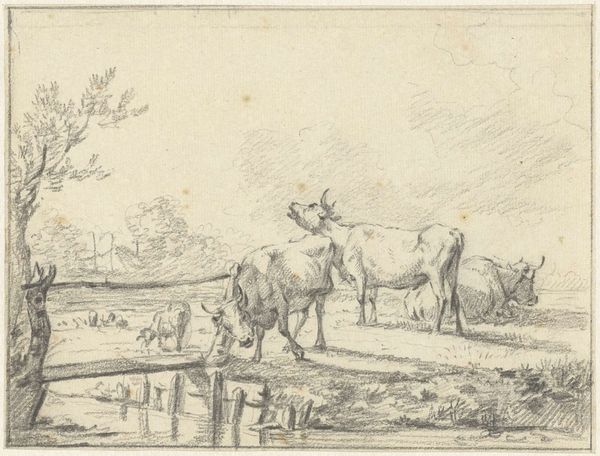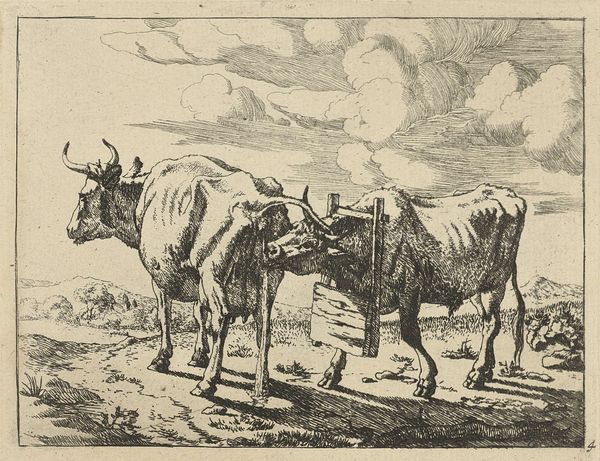
drawing, pencil, pastel
#
drawing
#
landscape
#
pencil
#
pastel
#
realism
Dimensions: height 213 mm, width 290 mm
Copyright: Rijks Museum: Open Domain
Jan Kobell II made this drawing of cows and sheep by a waterside in the late 18th or early 19th century. The scene might seem like a simple, idyllic depiction of rural life in the Netherlands. However, the image participates in an artistic tradition that also implicitly commented on the social and economic landscape of the time. The Dutch Republic was then a major economic power, and its wealth was largely derived from agriculture. Paintings and drawings that celebrated the countryside played a role in constructing a national identity rooted in the land. At the same time, such imagery also served the interests of the landowning class, helping to legitimize their position in society. In this context, we can understand how images of the Dutch countryside helped to shape cultural values and reinforce existing power structures. To understand these contexts better, we might consult historical surveys, economic data, and even literature from the period. These sources help us to understand how art is always embedded in a specific social and institutional context.
Comments
No comments
Be the first to comment and join the conversation on the ultimate creative platform.
